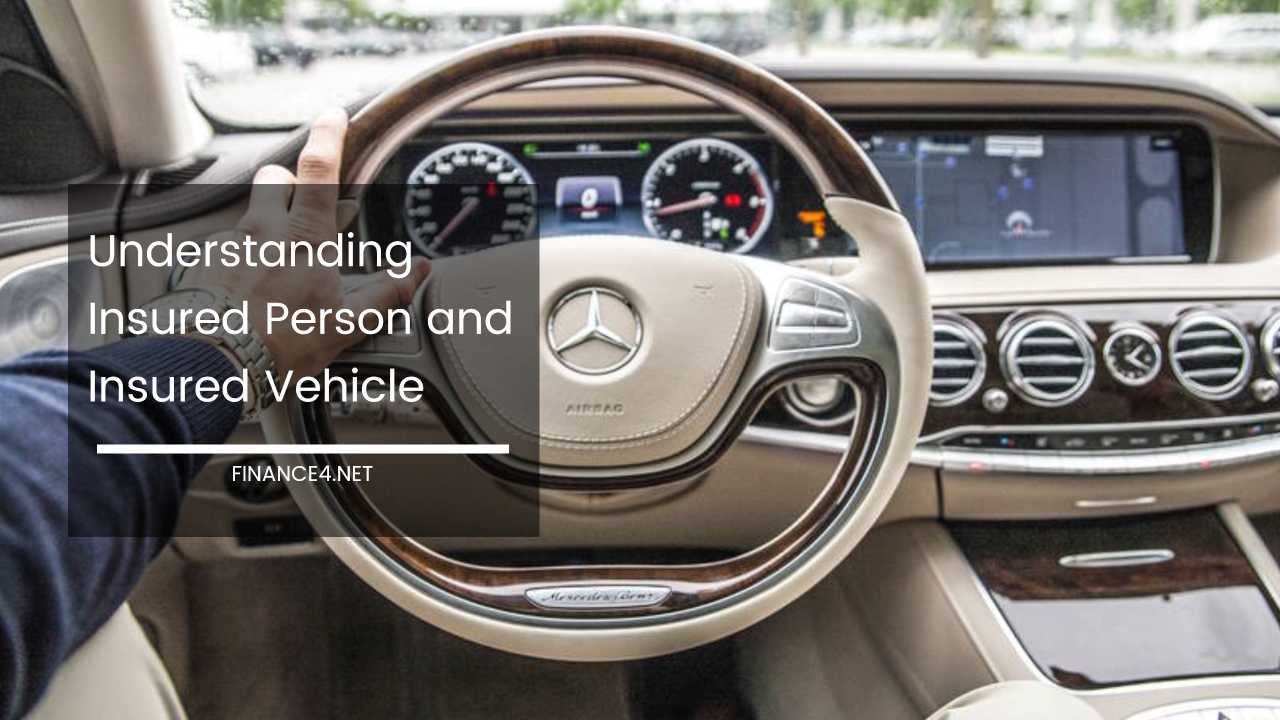Insured Persons and Insured Vehicles: A Guide for Policyholders

Understanding Insured Persons and Insured Vehicles: A Comprehensive Guide
The world of insurance can feel like a complex puzzle with countless pieces. But within this intricate system lie two foundational concepts: insured persons and insured vehicles.
Grasping these concepts empowers you to navigate the insurance landscape confidently, whether you’re securing protection for your car, health, or other valuables.
This comprehensive guide delves into the intricacies of insured persons and insured vehicles, equipping you with the knowledge to make informed decisions and ensure you’re adequately protected.
Insured Persons: The Backbone of Coverage
Insured persons, also known as policyholders or beneficiaries, are the individuals covered under an insurance policy.
They are the ones who stand to benefit from the financial safety net the policy offers. To fully understand this concept, let’s explore some key aspects:
- Policyholder Identity: The Driving Force of the Agreement
The policyholder is the cornerstone of the insurance contract. They are the one who enters into a formal agreement with the insurance company (insurer).
This agreement outlines the terms of coverage – what the policy covers and the corresponding premiums the policyholder agrees to pay.
The policyholder’s identity is paramount as it determines who has the authority to make changes to the policy and file claims on its behalf.
- Coverage Scope: Understanding Your Policy’s Boundaries
Each insurance policy is governed by a specific set of terms and conditions. These terms define the scope of coverage, essentially outlining the types of risks or events the insurance company will provide financial compensation for.
It’s vital for policyholders to meticulously review their coverage details to ensure they are adequately protected against potential losses.
For instance, a health insurance policy might cover hospitalization costs for a specific range of illnesses, while another might focus on preventive care or specific medical procedures.
Understanding exclusions within the policy is also crucial, as these outline events or situations not covered by the insurance.
- Responsibilities and Obligations: Maintaining the Partnership
Policyholders have certain duties and responsibilities they must fulfill to keep their coverage active. This includes paying premiums on time, providing accurate and complete information during the application process, and adhering to any stipulations or requirements outlined in the policy document.
Failure to uphold these obligations could result in the insurer canceling the policy or denying claims. For example, withholding information about pre-existing medical conditions on a health insurance application could lead to claim denial.
- Beneficiary Designation: Ensuring Your Wishes are Honored
Life insurance policies often allow the insured person (the person whose life is covered) to designate beneficiaries. These beneficiaries are the individuals or entities who will receive the payout from the policy upon the insured person’s death.
Beneficiaries can be family members, dependents, trusts, or even charitable organizations. It’s crucial for policyholders to regularly review and update their beneficiary designations to reflect their current wishes and ensure the intended individuals receive the benefits. This is especially important for life changes such as marriage, divorce, or the birth of a child.
- Claim Process: Navigating the Path to Reimbursement
If a covered loss or event occurs, insured persons have the right to file an insurance claim with their insurer.
The claim process typically involves submitting documentation and evidence to substantiate the claim, such as medical records, police reports, or repair estimates.
The insurer then assesses the validity of the claim and determines the appropriate payout amount based on the policy coverage and claim details. Understanding the claim process is essential for policyholders to navigate this phase effectively and ensure they receive the compensation they deserve.
Familiarizing yourself with deadlines for filing claims and the required documentation can expedite the process.
Insured Vehicles: Protecting Your Ride
In the realm of auto insurance, “insured vehicles” refers specifically to the cars, trucks, or motorcycles covered under the policy. Understanding this concept involves considering the following key aspects:
- Vehicle Identification: Pinpointing the Protected Asset
Insured vehicles are meticulously identified by their make, model, year, Vehicle Identification Number (VIN), and any other relevant details, such as mileage and modifications.
This information plays a vital role in accurately assessing the risk associated with insuring the vehicle, which ultimately impacts the premium rates. For instance, a sports car with a powerful engine will typically carry a higher premium than a fuel-efficient sedan.
- Coverage Types: Choosing Your Shield
Auto insurance policies offer a range of coverage options for insured vehicles. These options typically include:
- Liability Coverage: Protects against financial responsibility for injuries or damage caused to others in an accident you are at fault for.
- Collision Coverage: Covers damage to your insured vehicle in a collision with another vehicle or object.
- Comprehensive Coverage: Covers damage caused by events other than collisions, such as theft, vandalism, fire, weather events, or animal strikes.
- Uninsured/Underinsured Motorist Coverage: Protects you and your passengers against situations where the at-fault driver has no insurance or inadequate coverage to compensate for your injuries or vehicle damage.
- Medical Payments Coverage: Covers medical expenses for the policyholder and passengers injured in an accident, regardless of fault.
The specific coverage types selected by the policyholder determine the extent of protection provided for the insured vehicle. It’s advisable to consult with an insurance agent to understand your individual needs and choose the most suitable coverage options.
- Usage and Restrictions: Understanding the Rules of the Road
Insurance companies may impose certain restrictions or conditions regarding how an insured vehicle can be used. Common restrictions include:
- Personal Use Only: Using the vehicle for commercial purposes, such as deliveries or ride-sharing, might violate the policy terms and could lead to coverage denial.
- Driver Age and Experience: Young drivers or those with a poor driving history might face higher premiums or limitations on coverage.
- Geographic Limitations: Some policies might restrict coverage to specific geographic areas.
- Vehicle Modifications: Extensive modifications to the vehicle’s engine, suspension, or other key components might affect insurability or increase premiums.
Policyholders must adhere to these restrictions to avoid potential gaps in coverage or policy violations. It’s important to communicate any changes in vehicle usage or modifications to your insurance company to ensure your coverage remains valid.
- Additional Drivers: Expanding the Coverage Circle
Auto insurance policies may allow additional drivers to be covered under the policy, besides the primary policyholder.
However, insurers typically require information about these additional drivers, such as their driving history and their relationship to the policyholder, to accurately assess their risk profile and determine the appropriate premium adjustments.
Young drivers or those with a history of accidents or traffic violations might significantly increase the overall premium cost.
- Vehicle Valuation: Ensuring Fair Compensation
In the event of a total loss or significant damage to an insured vehicle, insurers use various methods to determine the vehicle’s value, which forms the basis for the compensation payout. Here’s a breakdown of common valuation methods:
- Actual Cash Value (ACV): This represents the depreciated market value of the vehicle at the time of the loss. It takes into account the vehicle’s age, mileage, condition, and local market value.
- Replacement Cost Coverage: This coverage option pays out the cost to replace the insured vehicle with a comparable one of the same make and model, considering its year of manufacture.
- Agreed Value: In some cases, the policyholder and the insurer can agree on a predetermined value for the vehicle at the outset of the policy. This value becomes the payout amount in case of a total loss, regardless of the vehicle’s actual market value at the time of the claim.
Understanding how the insurer values the insured vehicle is crucial for policyholders to ensure they receive fair compensation in the event of a claim.
Discussing valuation methods with your insurance agent during policy selection can help you make informed decisions.
Final Thoughts: Empowering Yourself Through Knowledge
By understanding the concepts of insured persons and insured vehicles, you are well on your way to navigating the complexities of insurance with confidence.
Remember, insurance is a risk management tool, and a clear understanding of the terms and conditions of your policy empowers you to make informed decisions and ensure you’re adequately protected against unforeseen events.
Don’t hesitate to ask questions and seek clarification from your insurance agent whenever needed. By being an informed policyholder, you can ensure you receive the maximum benefit from your insurance coverage.



